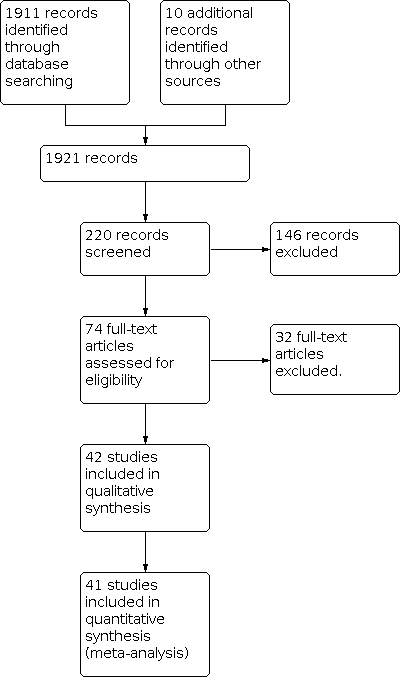Contenido relacionado
Revisiones y protocolos relacionados
Anthony C James, Tessa Reardon, Angela Soler, Georgina James, Cathy Creswell | 16 noviembre 2020
Jonathan C Ipser, Dan J Stein, Susan Hawkridge, Lara Hoppe | 8 julio 2009
Evan Mayo‐Wilson, Paul Montgomery | 9 septiembre 2013
Rasmita Ori, Taryn Amos, Hanna Bergman, Karla Soares‐Weiser, Jonathan C Ipser, Dan J Stein | 10 mayo 2015
Georgina R Cox, Patch Callahan, Rachel Churchill, Vivien Hunot, Sally N Merry, Alexandra G Parker, Sarah E Hetrick | 30 noviembre 2014
Janine V Olthuis, Margo C Watt, Kristen Bailey, Jill A Hayden, Sherry H Stewart | 12 marzo 2016
Richard T O'Kearney, Kaarin Anstey, Chwee von Sanden, Aliza Hunt | 18 octubre 2006
Hiran Thabrew, Karolina Stasiak, Sarah E Hetrick, Liesje Donkin, Jessica H Huss, April Highlander, Stephen Wong, Sally N Merry | 22 diciembre 2018
Natalie Simon, Lindsay Robertson, Catrin Lewis, Neil P Roberts, Andrew Bethell, Sarah Dawson, Jonathan I Bisson | 20 mayo 2021
Hiran Thabrew, Karolina Stasiak, Sarah E Hetrick, Stephen Wong, Jessica H Huss, Sally N Merry | 15 agosto 2018
Respuestas clínicas Cochrane
Sujoy Ray | 23 septiembre 2019
Sujoy Ray | 2 octubre 2017






















